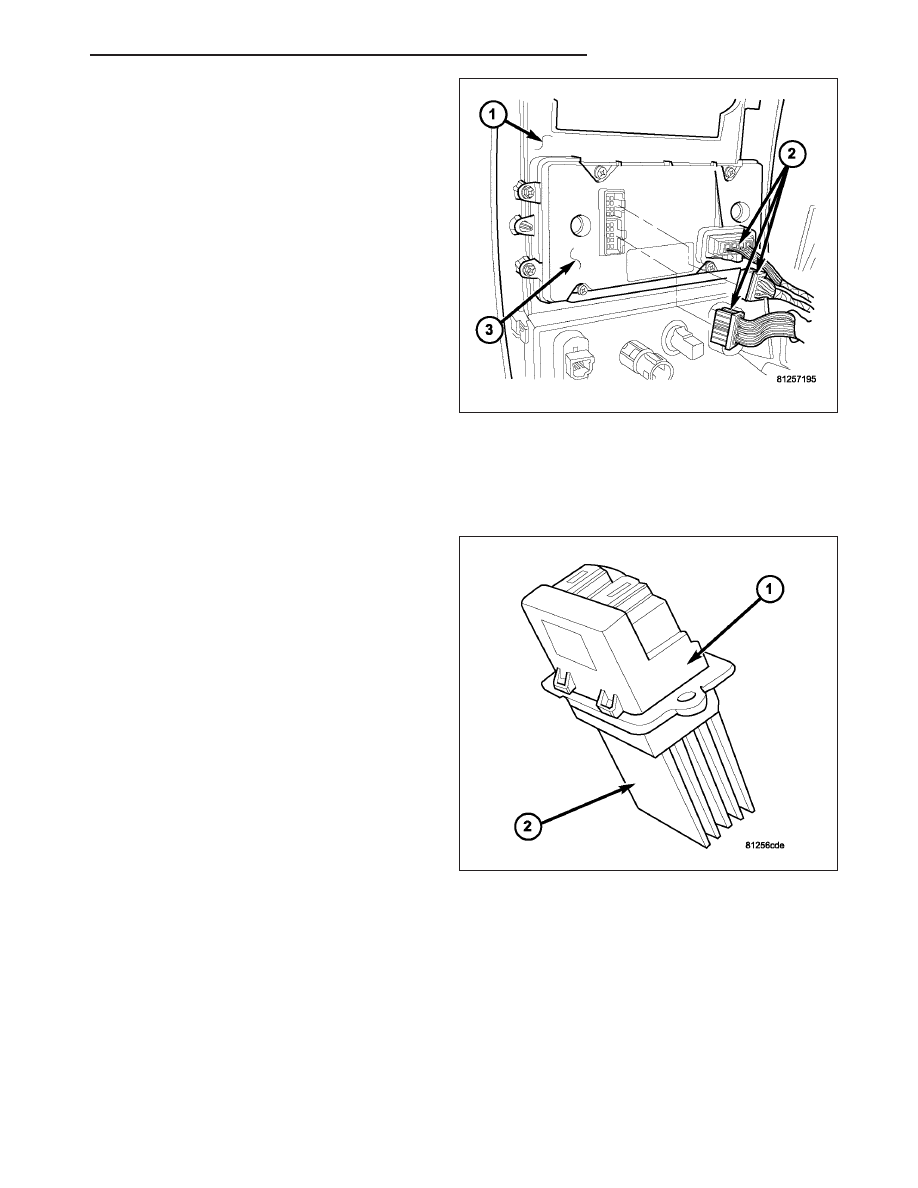Content .. 1538 1539 1540 1541 ..
Dodge Durango (HB). Manual - part 1540

3. Connect the wire harness connector(s) (2) to the
A/C-heater control (3) and install the instrument
panel center bezel (1) (Refer to 23 - BODY/IN-
STRUMENT PANEL/INSTRUMENT PANEL CEN-
TER BEZEL - INSTALLATION).
4. Reconnect the negative battery cable.
MODULE-POWER-BLOWER MOTOR
DESCRIPTION
A blower motor power module is used on this model
when it is equipped with the automatic temperature
control (ATC) heating-A/C system. Models equipped
with the manual temperature control (MTC) heating-
A/C system use a blower motor resistor block, instead
of the blower motor power module (Refer to 24 -
HEATING
&
AIR
CONDITIONING/CONTROLS
-
FRONT/RESISTOR
BLOCK-BLOWER
MOTOR
-
DESCRIPTION).
The blower motor power module is mounted to the
rear of the HVAC housing, directly behind the glove
box. The blower motor power module consists of a
molded plastic mounting plate with two integral con-
nector receptacles (1). Concealed behind the mount-
ing plate is the power module electronic circuitry and a
large finned heat sink (2). The blower motor power
module is accessed for service from beneath the right
side of the instrument panel.
OPERATION
The blower motor power module is connected to the vehicle electrical system through a dedicated lead and con-
nector of the HVAC wire harness. A second connector receptacle receives the wire harness connector from the
blower motor. The blower motor power module allows the microprocessor-based automatic temperature control
(ATC) A/C-heater control to calculate and provide infinitely variable blower motor speeds based upon either manual
blower switch input or the ATC programming using a pulse width modulated (PWM) circuit strategy.
The PWM voltage is applied to a comparator circuit which compares the PWM signal voltage to the blower motor
feedback voltage. The resulting output drives the power module circuitry, which provides a linear output voltage to
change or maintain the desired blower speed.
The blower motor power module can be diagnosed using a scan tool.
The blower motor power module cannot be adjusted or repaired and, if faulty or damaged, it must be replaced.
HB
CONTROLS - FRONT
24 - 353